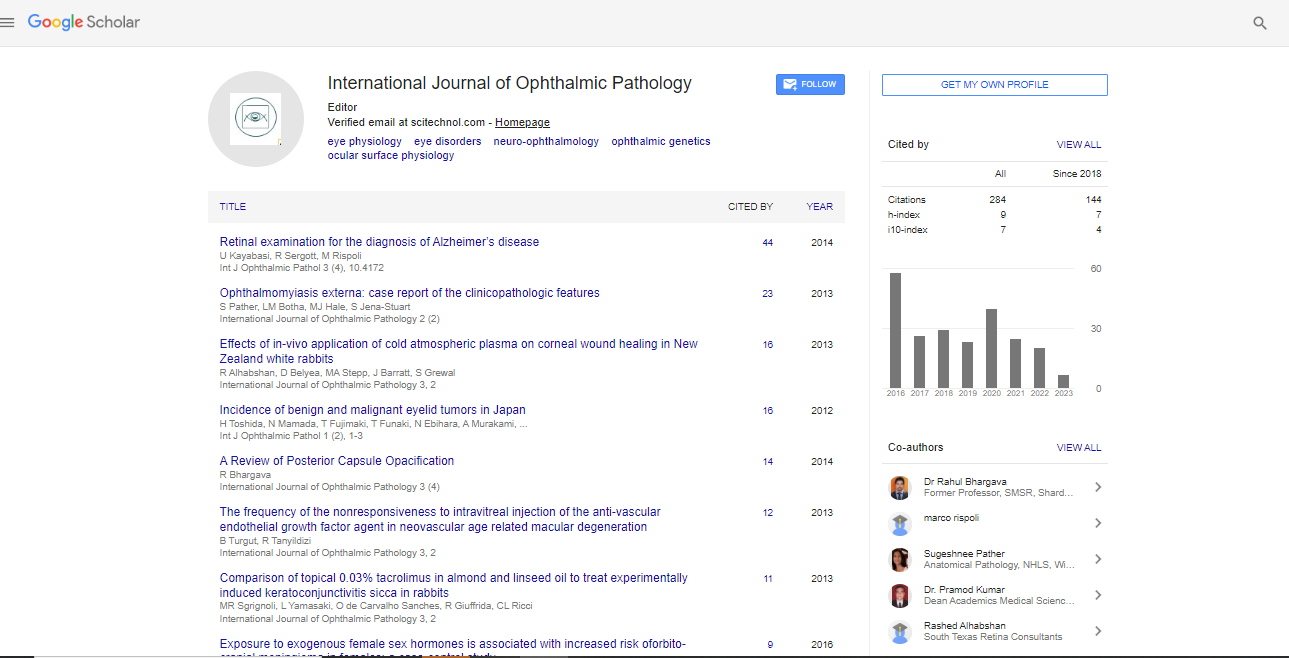A case of MEWDS following COVID-19 infection
Obadah Moushmoush*, Travis Peck1 and Arthi Venkat
The Retina Group of Washington, United States
West Virginia University School of Medicine, West Virginia
: Int J Ophthalmic Pathol
Abstract
Multiple Evanescent White Dot Syndrome (MEWDS) is a typically acute-onset, unilateral syndrome that manifests with decreased vision, scotomas, photopsias, or a combination of all three. On fundoscopy, numerous gray, white, or yellow-white dots can be seen at the level of the outer retina or retinal pigment epithelium, most often in the posterior pole. A mild anterior chamber reaction and vitritis may also be noted in some patients. The etiology remains unclear and no hereditary predilection has been reported; however, the syndrome most commonly affects healthy women from 15 to 50 years of age. When there is suspicion for MEWDS, multiple imaging modalities can help elucidate the syndrome. For example, Fluorescein Angiography (FA) can reveal a wreath-like pattern of punctate, hyperfluorescent dots, as well as late-leakage and staining of the optic nerve head. Approximately one-third of patients with MEWDS report a viral prodrome prior to onset of visual symptoms. The underlying pathogenesis of MEWDS may involve an immune response to viral antigens that have gained access to retinal receptor cells. In the literature, there has been one case report of atypical MEWDS following infection with COVID-19, as well as multiple case reports of MEWDS after COVID-19 vaccination. Here, we report a case of MEWDS shortly following infection with COVID-19 and review the literature surrounding MEWDS and other retinal conditions related to COVID-19.
Biography
Obadah Moushmoush, MD is Resident, West Virginia University School of Medicine, Morgantown, West Virginia.
 Spanish
Spanish  Chinese
Chinese  Russian
Russian  German
German  French
French  Japanese
Japanese  Portuguese
Portuguese  Hindi
Hindi 